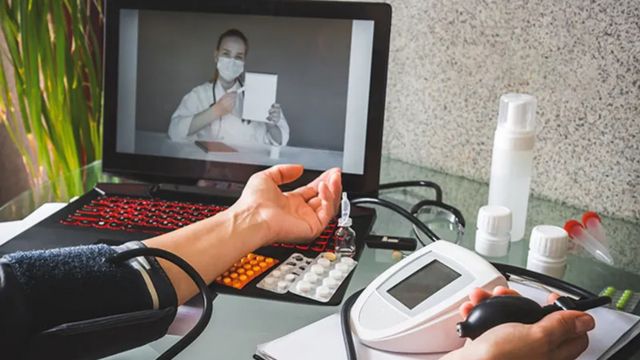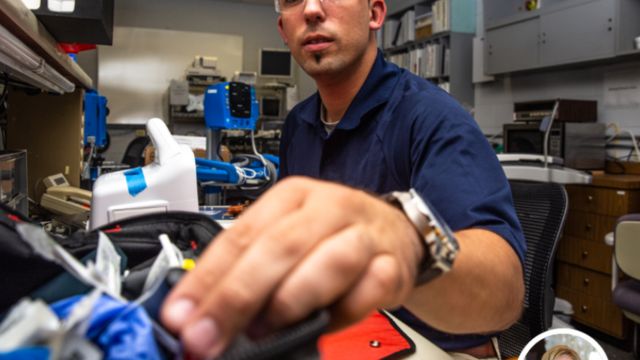home healthcare and remote monitoring solutions more and more. Technological developments, especially in the field of medical gadgets and telemedicine, allow patients to get treatment right in their homes. The importance of clinical engineers has evolved as this field expands. Traditionally engaged in maintaining and managing medical equipment in hospitals, clinical engineers are now assuming new roles in the development, implementation, and monitoring of home healthcare devices and remote patient monitoring systems.
The function of clinical engineers in the context of remote monitoring and home healthcare devices will be discussed in this paper, so stressing their contributions to patient safety, device functionality, and healthcare outcomes.
What is Clinical Engineering?
Within biomedical engineering, clinical engineering is the study of engineering ideas applied to the healthcare sector. Making sure medical equipment is used safely and effectively in clinical environments falls to clinical engineers. Working closely with medical experts, they develop, test, and maintain medical equipment to make sure it satisfies legal criteria and operates at the best possible performance.
Within the framework of home healthcare, clinical engineers become even more important. They enable patients in their homes to have safe, dependable, and useful equipment used for remote monitoring. This covers anything from sensors for the management of chronic diseases to telehealth systems allowing doctors to track patients without their having to visit them personally.
You may like this: Biocompatibility in Medical Device Manufacturing: What You Need to Know
Role of Clinical Engineers in Remote Monitoring and Home Healthcare Devices

1. Device Selection and Customization
Choosing the proper devices for remote monitoring comes first in the clinical engineering process. Evaluating several technologies is the responsibility of clinical engineers in order to identify which devices fit home healthcare settings most of all This entails knowing patient needs and matching them with suitable devices such wearable ECGs, glucose monitors, heart rate sensors, and blood pressure monitors.
Many times, clinical engineers may adapt tools to guarantee they are user-friendly and satisfy the needs of certain patients. For elderly patients or those with certain medical conditions, for instance, they might adjust the parameters of a gadget to guarantee its accuracy and efficiency.
2. Integration with Healthcare Systems
One of the most critical roles of clinical engineers is ensuring that home healthcare devices are integrated seamlessly with broader healthcare systems. This involves ensuring that devices are capable of transmitting data securely and accurately to healthcare providers in real-time. Clinical engineers facilitate the integration of these devices with Electronic Health Records (EHR), cloud-based platforms, and telemedicine solutions, ensuring that the data captured by remote devices is easily accessible to doctors, nurses, and other healthcare professionals.
This integration allows for efficient monitoring of patients, enabling early intervention in case of issues and reducing hospital readmissions.
3. Maintenance and Support
Once remote monitoring devices are deployed, clinical engineers are responsible for maintaining them. This includes regular calibration and troubleshooting to ensure the devices remain accurate and reliable over time. Clinical engineers monitor the performance of the devices, ensuring that they continue to function properly and that any potential issues are addressed quickly.
In addition to maintenance, clinical engineers provide ongoing technical support to patients and healthcare providers. This may include remote troubleshooting, ensuring that devices are working correctly, and providing guidance to patients on how to use the devices effectively.
4. Ensuring Compliance with Regulations
In the medical field, patient safety is of paramount importance, and clinical engineers play a vital role in ensuring that remote healthcare devices meet regulatory standards. In many regions, medical devices are subject to strict regulations, such as those set by the FDA (Food and Drug Administration) in the U.S. or the European Medicines Agency (EMA) in Europe.
Clinical engineers ensure that the devices they deploy in home healthcare settings comply with these regulations. This includes ensuring that the devices are certified, have passed appropriate testing, and are compliant with safety standards.
5. Patient Education and Training
Although remote healthcare devices are designed to be easy to use, clinical engineers often provide patient education and training to ensure that patients can operate the devices correctly. This is especially important for elderly patients or those with limited technological literacy. Clinical engineers educate patients on how to use the devices, troubleshoot basic issues, and interpret the data they generate.
They may also provide training to caregivers, ensuring that they are equipped to assist patients with using the devices and interpreting the information that is collected.
The Future of Clinical Engineering in Home Healthcare
As home healthcare and remote monitoring continue to evolve, the role of clinical engineers will only become more critical. Advancements in telemedicine, AI, and data analytics will further enhance the capabilities of home healthcare devices. Clinical engineers will be tasked with integrating these new technologies into existing systems, ensuring that they work seamlessly to improve patient outcomes.
Moreover, the increasing focus on personalized medicine will drive the need for more tailored healthcare solutions. Clinical engineers will play a key role in developing and deploying devices that can monitor and treat specific health conditions in a way that is customized for individual patients.
Conclusion
The role of clinical engineers in remote monitoring and home healthcare devices is essential to the future of healthcare. They are the bridge between cutting-edge technology and patient care, ensuring that home healthcare devices are safe, reliable, and effective. From device selection and customization to integration, maintenance, and patient education, clinical engineers are crucial in transforming healthcare delivery in the home setting.
As healthcare continues to move toward a more patient-centered, remote approach, the expertise of clinical engineers will be more valuable than ever.
Keep ahead of the curve in remote healthcare technologies and clinical engineering. Subscribe JandJ Supplies for the most recent updates, industry news, and analysis on home healthcare devices, clinical engineering, medical supplies, and tools. Keep educated and linked with the direction healthcare will take!
Frequently Asked Questions (FAQ)
What is the role of clinical engineers in home healthcare?
Clinical engineers are responsible for selecting, integrating, maintaining, and ensuring the safety of medical devices used in home healthcare settings. They ensure that remote monitoring devices work effectively and securely, providing continuous support to patients and healthcare providers.
How do clinical engineers ensure the safety of home healthcare devices?
Clinical engineers ensure the safety of home healthcare devices by verifying that they meet regulatory standards, performing regular maintenance, and troubleshooting technical issues. They also educate patients and caregivers on proper usage.
Why is device integration important in remote healthcare?
Device integration allows for real-time monitoring of patient data by healthcare professionals, facilitating early interventions and reducing hospital readmissions. Clinical engineers ensure that devices can transmit data accurately and securely to healthcare systems.
Can clinical engineers help with the customization of medical devices?
Yes, clinical engineers can customize devices to meet the specific needs of patients. This can involve adjusting device settings or tailoring functionality to ensure optimal performance for individual patients.








